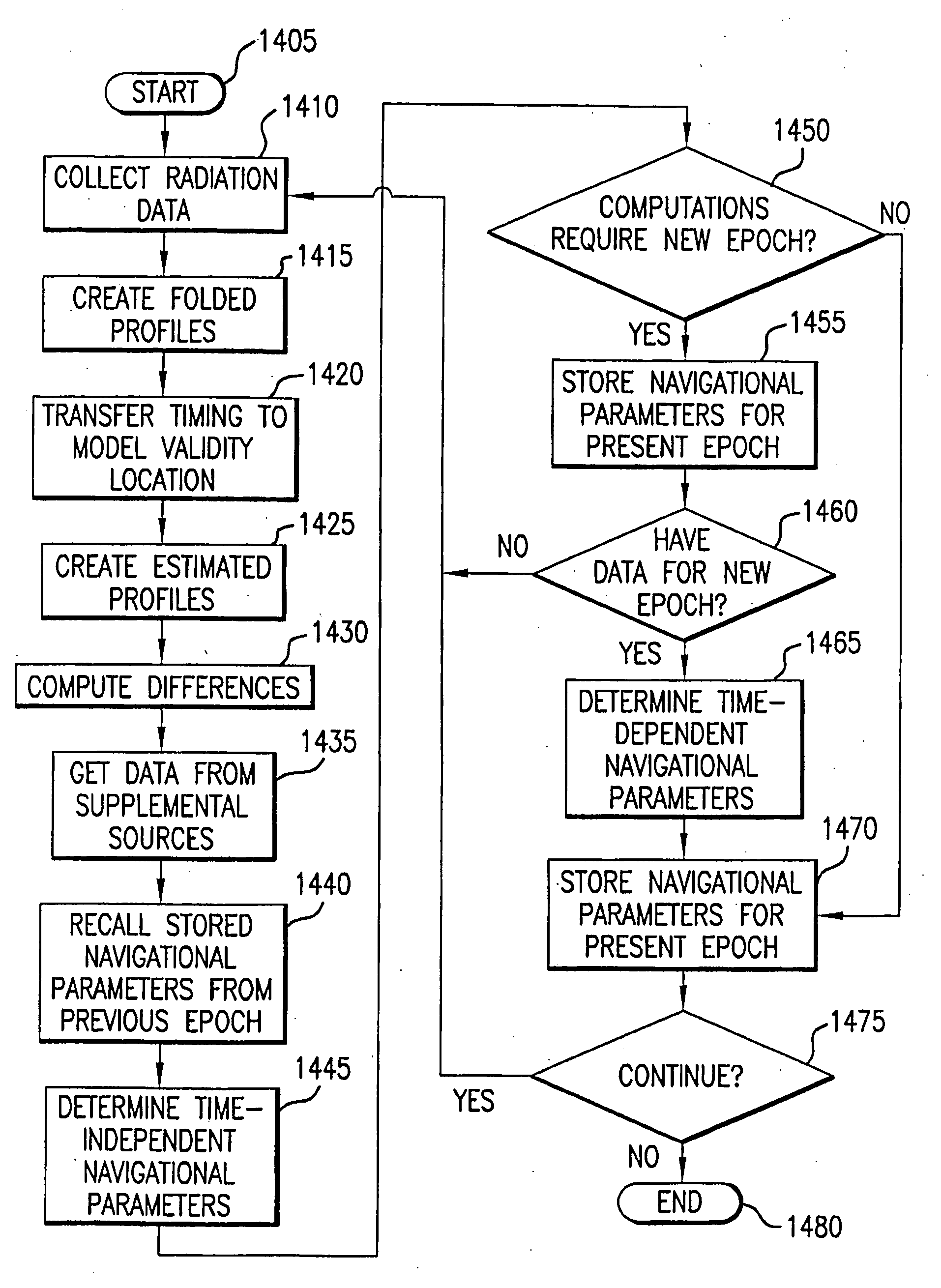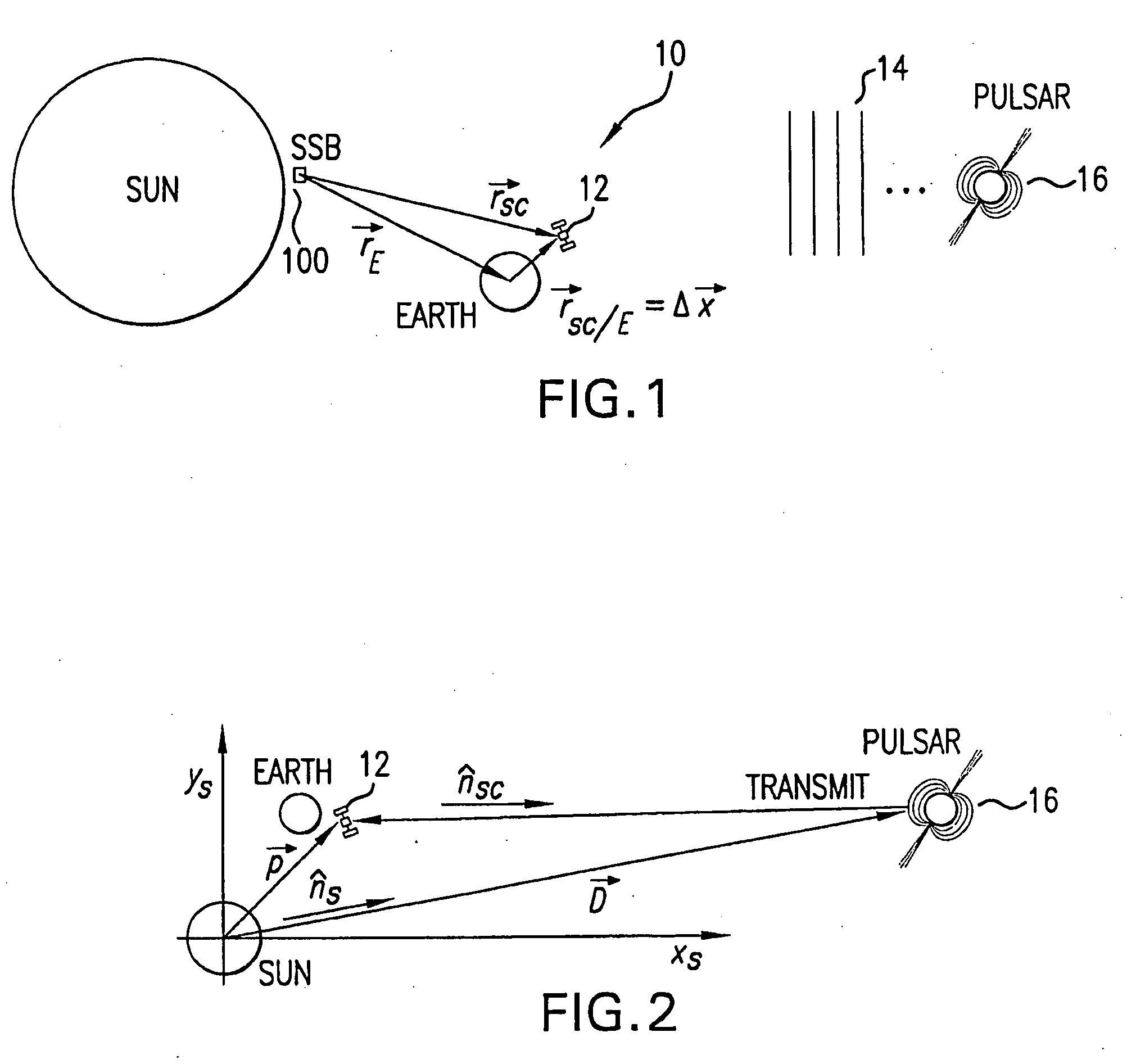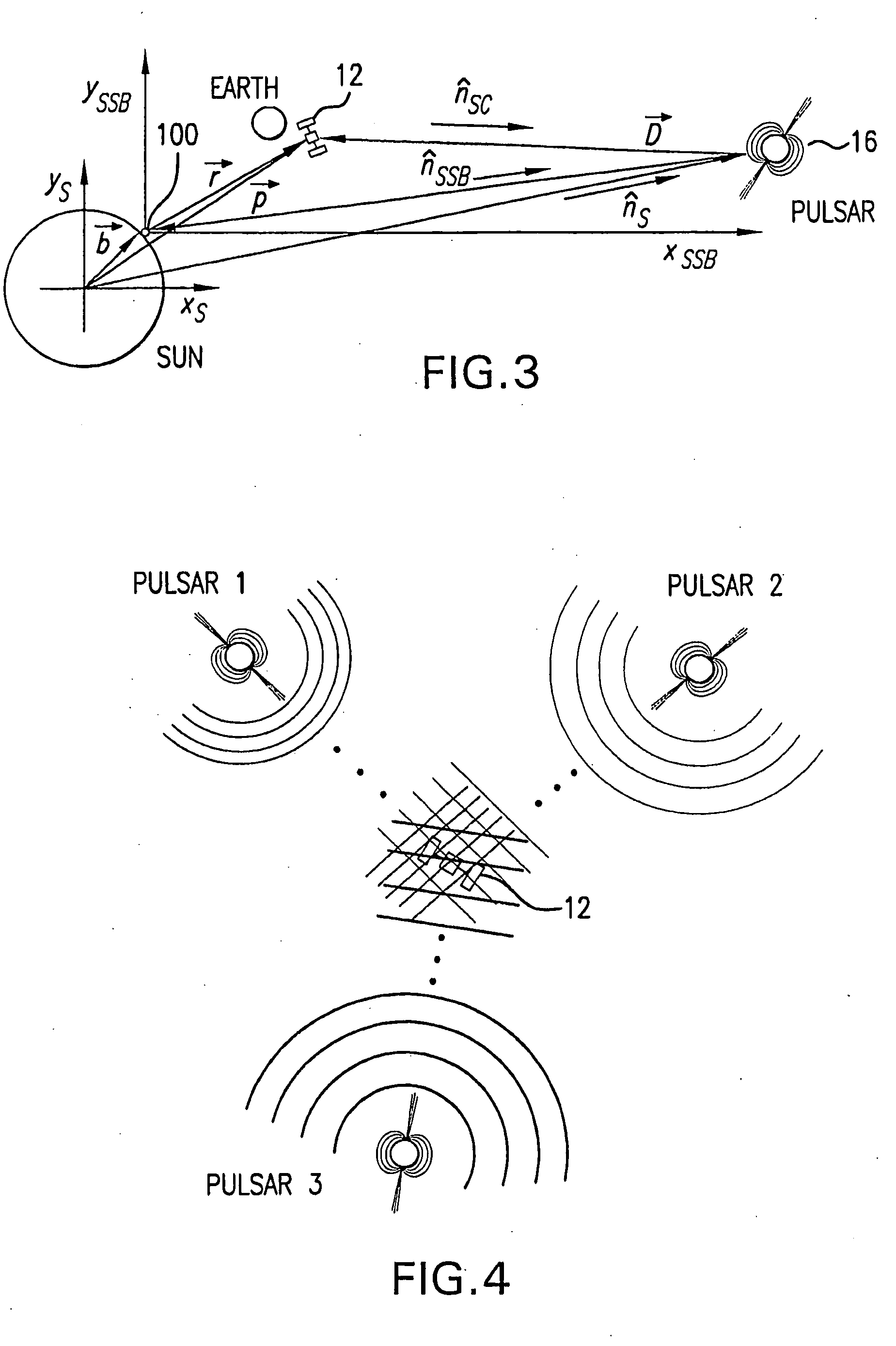Navigation system and method using modulated celestial radiation sources
a celestial radiation and navigation system technology, applied in the direction of reradiation, navigation instruments, instruments, etc., can solve the problems of only being accurate to a finite angular accuracy, affecting the trajectory of the vehicle, and increasing the error in navigational data
- Summary
- Abstract
- Description
- Claims
- Application Information
AI Technical Summary
Problems solved by technology
Method used
Image
Examples
Embodiment Construction
I. Overview
[0039]The present invention is now described with reference to the Drawings. In the Figures, like elements are annotated with like numerals and descriptors.
[0040]Referring to FIG. 1, there is illustrated an exemplary system 10 for absolute and relative position determination using celestial radiation sources in accordance with the present invention. As used herein, a “celestial source” refers to a natural (not man-made) celestial body emitting radiation.
[0041]As is shown in the Figure, a spacecraft, satellite or other vehicle 12 is positioned near Earth within the Solar System, as indicated by the position vector rSC / E. The location of the Earth relative to the Solar System Barycenter (SSB) is rE and the location of the spacecraft 12 relative to the SSB is rSC. The spacecraft 12 is operable to receive modulated radiation, such as pulsed radiation 14, generated by a celestial body, such as pulsar 16. The modulated radiation is subsequently used to generate navigational inf...
PUM
 Login to View More
Login to View More Abstract
Description
Claims
Application Information
 Login to View More
Login to View More - R&D
- Intellectual Property
- Life Sciences
- Materials
- Tech Scout
- Unparalleled Data Quality
- Higher Quality Content
- 60% Fewer Hallucinations
Browse by: Latest US Patents, China's latest patents, Technical Efficacy Thesaurus, Application Domain, Technology Topic, Popular Technical Reports.
© 2025 PatSnap. All rights reserved.Legal|Privacy policy|Modern Slavery Act Transparency Statement|Sitemap|About US| Contact US: help@patsnap.com



